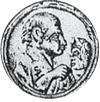Fürdőélet és közönség a tizenkilencedik századi Balatonfüreden
Kulcsszavak:
BalatonfüredAbsztrakt
Bathing Life and Audience in the Nineteenth Century Balatonfüred
Bath culture is one of humanity's oldest civilizational phenomena and – due to its historical, religious and geographical diversity – bears the characteristics of a particular age and society. In the nineteenth century, bathing was not only a way of cleansing, but also a way of life, where the preservation of health and healing were linked to the new concept of leisure time, including the arts. Through the history of theatre in Balatonfüred my research examines the composition of the spa from 1702 until the mid-nineteenth century. Balatonfüred played a regional role during the reform era. The essay analyses the spa visitors and audience’s impact on the life and theatre of Balatonfüred, covering the presence of the cultural and political elite of the nineteenth century, placing Balatonfüred on the palette of European bathing and theatrical culture.
Hivatkozások
Anon., 1846. A Kisfaludy-gőzös. Pesti divatlap. 1846. október 3., 793-794.
DOBSZAY Tamás és FÓNAGY Zoltán, GERGELY András (szerk), 2005. Nemi szerepek. In: Magyarország története a 19. században, Budapest: Osiris. 66-68.
ESZTERHÁZY Miklós és MERÉNYI Lajos (szerk), 1900. Eszterházy Miklós levelei Nyári Krisztinához 1624—1639. Első közlemény. Történelmi Tár. Bp, Magyar Történelmi Társulat, 1900, 40-42.
FRANCSICS Károly és Hudi József (szerk), 2001. Francsics Károly visszaemlékezései. Pápa: Pápai Református Gyűjtemények.
HUDI József (szerk), 2015. Balatonfüredi panaszkönyv 1836-1840. Balatonfüred: Balatonfüred Városért Közalapítvány Kuratóriuma.
KATONA Csaba, 2002. Adatok Balatonfüred 1860-as évekbeli fejlődéséhez. Századok. 2002. 136, no. 6., 1423–1454.
Downloads
Megjelent
Hogyan kell idézni
Folyóirat szám
Rovat
License

This work is licensed under a Creative Commons Attribution 4.0 International License.

This work is licensed under a CC BY Creative Commons Attribution 4.0 International License, which permits any use, reproduction, distribution, self-archiving and citation of the work as long as the authors are credited. The complete bibliographical data of Symbolon Journal must also be indicated, which you can find in the How to cite section on this page. If possible, please also place a link leading to the original publication. Copyright of articles belongs to the authors.




